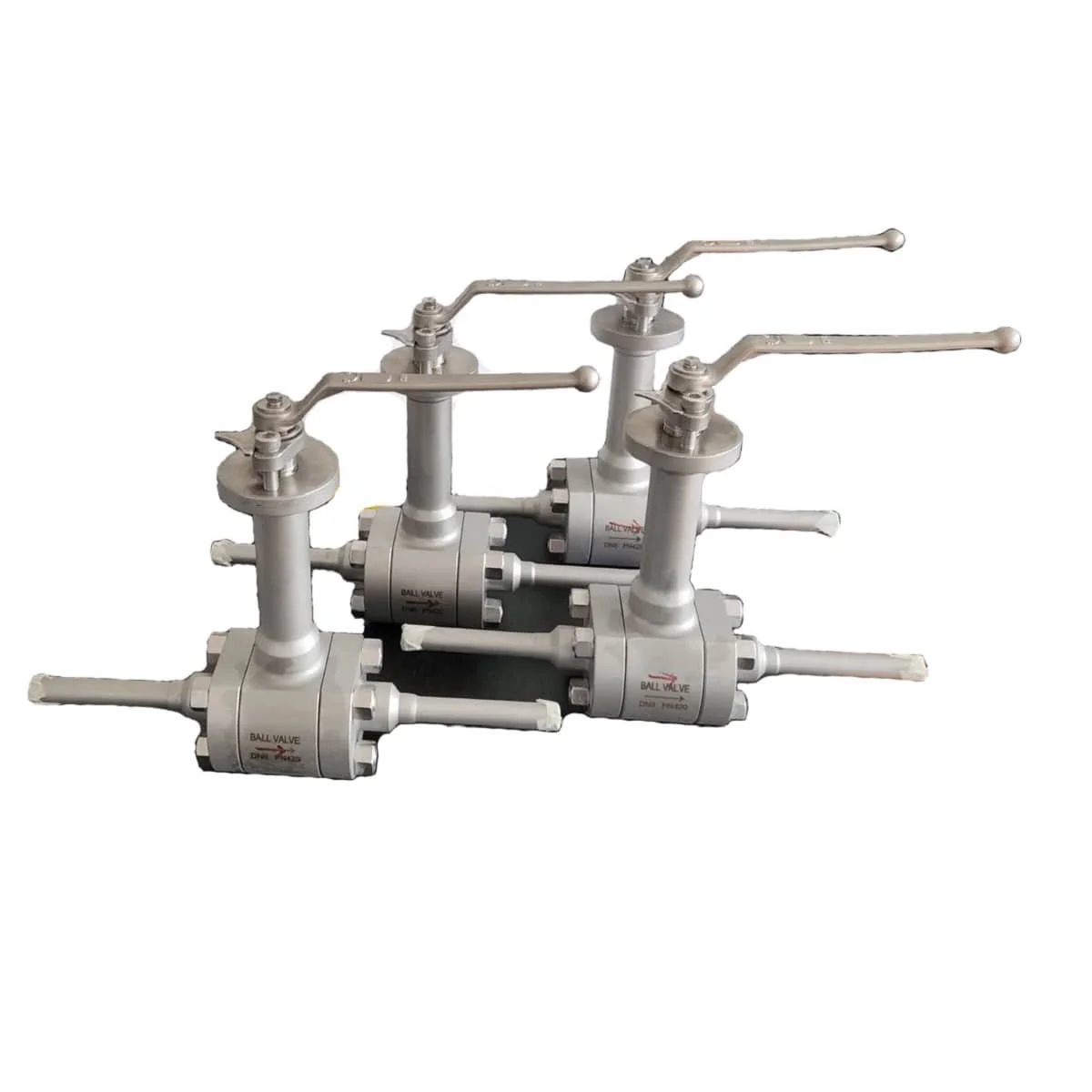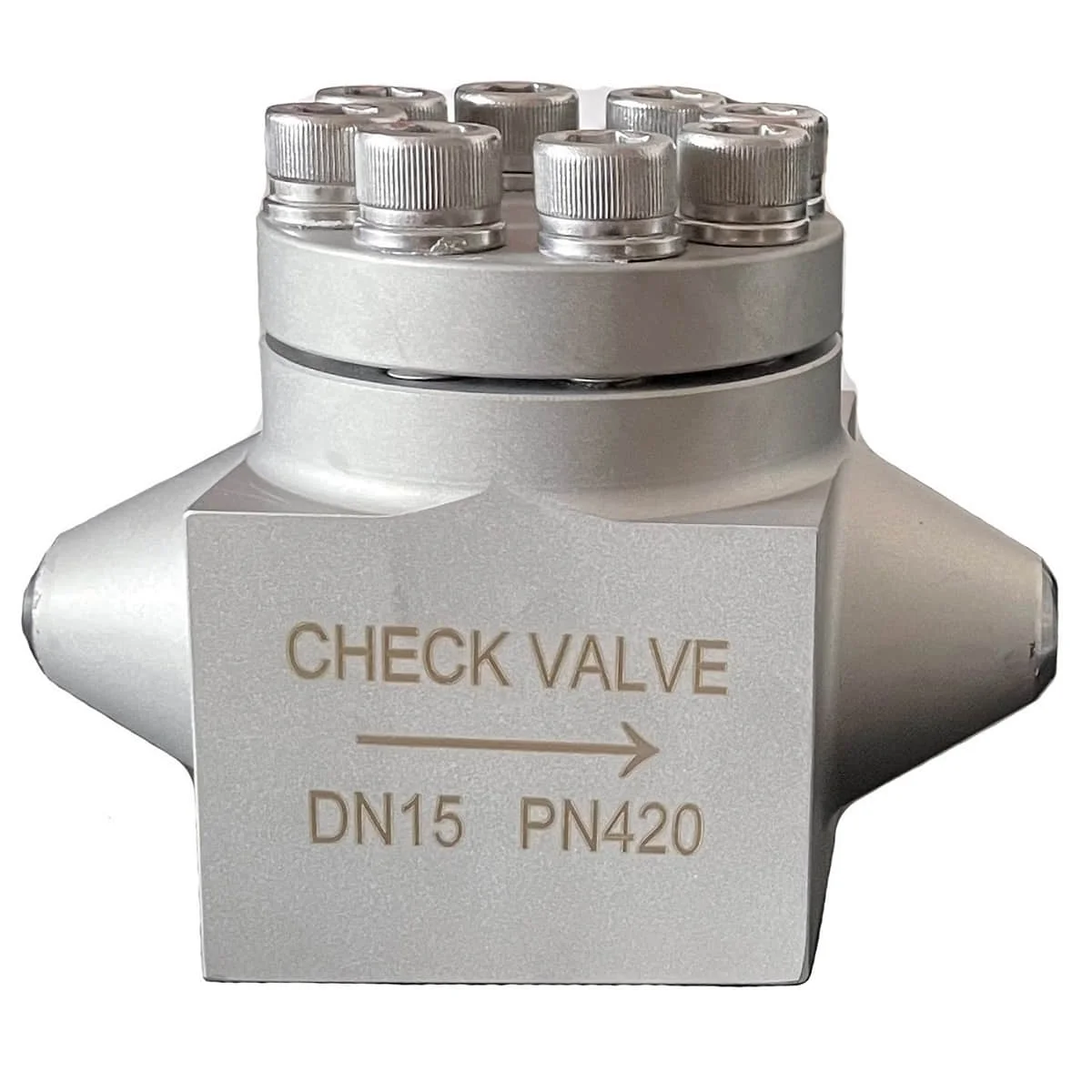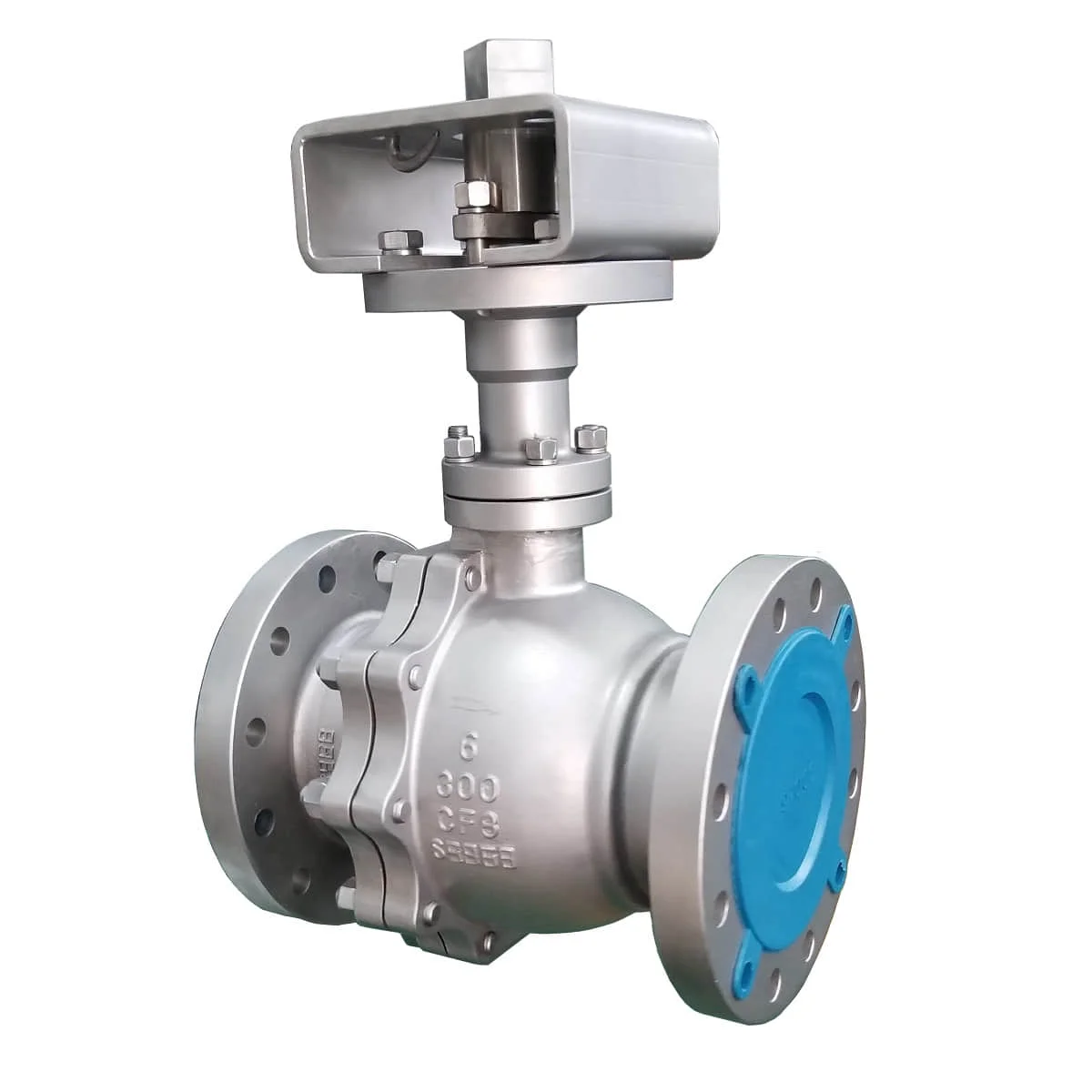
The cng lng cryogenic ball valve ensures reliable shutoff and flow control in extreme low-temperature lng and cng systems, featuring corrosion-resistant stainless steel and extended bonnets for durability up to -196°c and pn40 pressure ratings.
The cng lng cryogenic ball valve ensures reliable shutoff and flow control in extreme low-temperature lng and cng systems, featuring corrosion-resistant stainless steel and extended bonnets for durability up to -196°c and pn40 pressure ratings.
Detailed specifications for DN8 and DN20 cryogenic plug valves designed for ultra-low temperature service.
| Specification | DN8 | DN20 |
|---|---|---|
| Size | DN8 | DN20 |
| Rating | PN420 | |
| End Connection | BW as per B16.25 | |
| Temperature | -196 ℃ | |
| Body & Bonnet | ASTM A182 F304 | |
| Plug | ASTM A182 F304 + HF | |
| Seat | PCTFE or HF Metal | |
| Actuation | Manual or Pneumatic | |
The CNG LNG Cryogenic Ball Valve is a precision-engineered valve designed for extreme low-temperature applications, providing reliable shutoff and flow control in liquefied natural gas (LNG) and compressed natural gas (CNG) systems. Built to operate from -196°C to +80°C, this cryogenic ball valve features an extended bonnet and impact-tested materials to prevent stem freeze-up and material embrittlement, ensuring safe operation in harsh cryogenic environments. Constructed from austenitic stainless steels like ASTM A182 F316L or F304L, with optional Inconel trim, it delivers exceptional corrosion resistance against moisture-induced pitting and thermal stresses, making it ideal for LNG terminals, CNG fueling stations, and industrial gas processing.
Compliant with BS 6364 for cryogenic service and API 608 for ball valve design, the LNG ball valve is available in full-port or reduced-port configurations, with sizes from 1/2" to 24" (DN15 to DN600) and end connections including flanged (ASME B16.5), butt-weld (B16.25), or threaded (NPT). It supports pressure ratings up to PN40 (ANSI Class 150-600) and full vacuum capability, with extended bonnets (250-500mm) to isolate packing from cryogenic temperatures, preventing ice formation and leaks. The valve undergoes rigorous cryogenic testing at -196°C using liquid nitrogen, with helium leak detection ensuring Class VI bubble-tight shutoff. Certifications like API 6D, NACE MR0175 for sour service, and fire-safe API 607 validate its performance in industrial cryogenic valve applications, from LNG carriers to air separation plants.
The CNG ball valve features a floating or trunnion-mounted ball with spring-loaded seats (PTFE or PEEK) for low-torque operation, reducing actuator requirements in automated systems. Its corrosion resistance is enhanced by surface treatments like electropolishing or passivation, resisting oxidation in humid cryogenic conditions, while impact-tested materials (Charpy V-notch >27J at -196°C) prevent brittle fracture. The valve achieves tensile strengths above 515 MPa and yield strengths of 205 MPa, ensuring durability under thermal cycling and pressure surges up to 40 bar. Nondestructive testing (RT, UT, PT) per ASME Section V confirms defect-free construction, with low-emission packing (Grafoil or cryogenic-grade PTFE) meeting TA-Luft and EPA standards for fugitive emissions.
Compared to gate or globe valves, the low temperature ball valve offers a compact design (up to 50% lighter) and quarter-turn operation for rapid shutoff, ideal for emergency isolation in LNG transfer lines or CNG compression systems. Its streamlined two- or three-piece body minimizes leak paths, enhancing safety in flammable gas environments, while optional double-block-and-bleed configurations ensure zero leakage during maintenance. Customizable actuators (pneumatic or electric) with position feedback enable integration with SCADA systems, supporting real-time monitoring in cryogenic processes. The valve’s ability to handle multiphase flows without seat damage extends service life by 3-5 times compared to standard valves, reducing operational costs in industrial cryogenic valve setups.
Addressing challenges like thermal contraction, fugitive emissions, and material brittleness in low temperature ball valve applications, this CNG ball valve incorporates bellows seals and secondary metal-to-metal backups for enhanced integrity. Its compatibility with global standards like MSS SP-134 and EN 12516 ensures applicability in diverse systems, from offshore FPSOs to biomedical cryostorage. Whether isolating LNG loading arms or regulating nitrogen flows in superconductors, the CNG LNG Cryogenic Ball Valve delivers cost-effective, high-reliability performance, safety, and durability for extreme low-temperature industrial operations.
Engineered for reliable shutoff in cryogenic LNG and CNG systems with corrosion-resistant materials.
Cryogenic valves are designed to handle extremely low temperatures and prevent leakage of sensitive cryogenic fluids. While various types exist, all share a basic feature: a tight shut-off to ensure safety and efficiency.
Triple-offset butterfly valves are ideal for cryogenic service due to their non-friction, metal-to-metal seal that ensures bubble-tight shut-off. They provide fast opening/closing and are well-suited for remote operation. Example: Durco TX3 with excellent shutoff, low torque, and reduced wear.
Featuring a spherical body and a disc that rotates 90° to the seat plane, these valves provide long-term sealing. However, they are not suitable for high flow rates due to erosion risks. A full Stellite trim is recommended to reduce wear since cryogenic fluids lack lubricity.
Widely used in liquid gas applications, double-seal ball valves (e.g., L&T, AMPO Poyam) provide excellent flow characteristics and a tight seal. Their design incorporates a vapor space that keeps gland packing near ambient temperature, reducing thermal conductivity. Best for unrestricted flow paths, though seals and the ball may wear over time.
Equipped with a wedge-shaped gate, these valves ensure minimal pressure drop when fully open, making them desirable for large-size applications. Brands like Poyam, L&T, and NEWCO Douglas-Chero are commonly used. However, gate valves are more difficult to actuate compared to butterfly valves and are prone to wear under frequent operation. An advantage: metal-to-metal sealing avoids cold flow issues seen in Teflon-sealed ball valves.

| Organization | Standard | Description |
|---|---|---|
| ANSI | American National Standards Institute | General industrial standards |
| API | American Petroleum Institute | Standards for oil and gas industry |
| ASME | American Society of Mechanical Engineers | Boiler and pressure vessel codes |
| BS | British Standards | UK national standards |
| GB, JB, HG | China Valve Standards | Chinese national and industry standards |
Upstream, midstream, and downstream operations, including drilling, refining, and transportation.
Handling corrosive and hazardous chemicals in various chemical plants.
Steam, water, and fuel systems in thermal, nuclear, and hydroelectric plants.
Municipal water supply, wastewater treatment, and industrial water management.
Heating, ventilation, and air conditioning systems in commercial and industrial buildings.
Sterile and hygienic applications, precise flow control in sensitive industries.

The cng lng cryogenic check valve ensures reliable...

The 2-piece cryogenic floating ball valve provides...